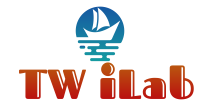Integrating writing and illustration into a holistic learning environment can help students develop social and emotional skills. Holistic learners can also focus on the importance of problem-solving and relationship-building with writing and illustration method. This article will discuss the benefits of this method in schools. It will also provide tips for integrating it into a holistic learning environment.
Integrating writing and illustration into a holistic learning environment
Integrating writing and illustration into a holistic learning environment is one way to create meaningful connections between children and their world. Holistic learning methods recognize the interconnectedness of skills and combine these outcomes into a single master lesson. Integrating reading and writing through historical figures is one example. Other examples include integrating math and science through baking and incorporating world cultures into the art of writing. In addition, holistic education methods emphasize the importance of a student’s identity and connection to the community and world.
The Holistic Writing Integration program writers started by developing a curriculum and teaching philosophy that integrated the writing and illustration method into a broader context. They focused on the role of art in fostering understanding of different issues, including global poverty. The program was initially designed for 80 students but now reaches over three years and 3,000 students.
Social-emotional development
Focusing on social-emotional development is a growing interest in schools, and the benefits of developing these skills in children cannot be overstated. Research shows that student success is closely linked to their emotional and social processes and that emotions can either support or thwart academic engagement and commitment. The socio-emotional learning method aims to help children identify and develop their natural talents and cultivate healthy relationships and personal values.
One of the main components of the social-emotional learning component is developing leadership skills, including empowering others to do the same. It also involves creating a sense of social justice and standing up for others. Another component focuses on developing responsible decision-making skills, such as ethical, safe, and constructive decisions requiring awareness of consequences. Incorporating this important component into writing and illustration can help students develop the skills they need to be successful in their lives.
Problem-solving
Traditional education teaches children that failure is inevitable and should be avoided. On the other hand, holistic education begins by teaching children how to survive in the real world. It means building their self-confidence and helping them understand the value of working hard to achieve their goals. The traditional approach to education focuses on passing tests and becoming a good worker. This approach focuses on the whole child, from the individual to the global community.
Holistic education involves teaching and learning, guided by a single overarching philosophy. Teachers use a variety of strategies and methods, from collaborative work to hands-on projects and problem-solving exercises. Holistic education also emphasizes problem-solving and the joy of discovery. It is also an effective way to mitigate the problems associated with traditional one-size-fits-all education models. Holistic education also promotes the idea of smaller classes and personalized attention, which are key to fostering holistic learning.
Building relationships
Holistic education encourages students to develop a sense of interconnectedness through the arts and uses writing and illustrations as powerful mediums. The holistic approach fosters students’ understanding of the relationship between themselves, others, and the environment. A child’s intellectual, mental, physical, emotional, and social capacities must all be developed for him or her to be capable of handling the demands and difficulties of daily life. The development of these skills is essential for success in professional domains of employment. A holistic education program combines the arts, sciences, and literature to foster a sense of unity in knowledge. While implementing holistic education can seem fragmented, several common themes can be used to make the learning process more effective.



